The Art of Landscaping
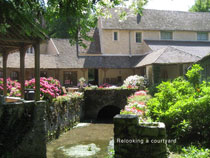

In addition to the sale value of your property, proper landscape installation will insure less expense over time and greater satisfaction. In my years of landscaping experience, I’ve been required to replant and repair numerous gardens which were originally installed without proper planning and technique. This ends up being more expensive than doing the job right the first time.
Remember to Plan Twice…Plant Once
Depending on your region, autumn may offer a good opportunity for plant establishment. In the
Northern hemisphere late August and early September offer cooler daytime air temperatures and continued warm soil temperatures and it is ideal for transplanting so that new root growth will establish before winter sets in.
Some years however, the weather can turn very wet and cool later in September so it is wise to aim for a two week gap in early September. Your region may be quite different, but understanding seasonal weather patterns and soil conditions (temperature and moisture) will allow you to make an informed decision. For instance, it would be not be advisable to plant in autumn in a heavy clay soil whereas in a sandy one it is fine.
Although you may find excellent information from a number of garden “experts,” this must be filtered through your understanding of your specific site, soil, region and level of horticultural understanding as each situation is different. The phrase “site specific” is important.
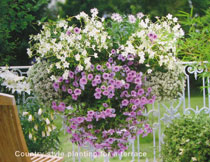 To Assess Your Landscape Needs start the process by focusing!
To Assess Your Landscape Needs start the process by focusing!
An important step in landscaping would be to know what you expect from the finished project. Your landscape’s problems, as with your household needs, will change with time. Both people and trees mature; lifestyles and tastes change.
Estimating Costs for a Landscape
Keeping costs down can be the hardest landscape challenge you face. Generally, starting small keeps plant costs under control; however, it may be years before your landscape matures. Larger plants cost much more, but provide instant results. If you buy large trees, you will need professional help transporting and installing them. As with all plants, the price varies according to its rarity and its quality. For annuals and perennials, buying seed and starting plants indoors is almost always cheaper than purchasing bedding plants.
Plan before you buy and avoid any impulse buying. Knowing exactly what you need and where you are going to put it helps avoid wasting money. Do talk to a professional.
Ask about guarantees…
Will the landscaper or nursery stand behind a guarantee on plant material? What about the hard scape items… if the retaining wall caves in, will it be replaced at no cost? How long is the guarantee in place? A landscaping company is required by law to maintain the project for the first year. This way, any serious installation mistakes can be dealt with in a timely manner.
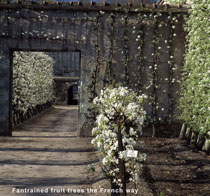 Will the installation company be providing some or all of the maintenance? If so, ask for the maintenance schedule. Basic lawn maintenance should include weekly mowing, seasonal fertilization, weed control if desired and aeration or de thatching services. Ask which chemicals, if any, will be used on your property. The contractor is required to provide the material safety data sheet for each.
Will the installation company be providing some or all of the maintenance? If so, ask for the maintenance schedule. Basic lawn maintenance should include weekly mowing, seasonal fertilization, weed control if desired and aeration or de thatching services. Ask which chemicals, if any, will be used on your property. The contractor is required to provide the material safety data sheet for each.
Landscaping is a relatively large investment and involves a lot of hard work. If you will be contracting some or all of your landscape installation, take the time to evaluate all the possibilities. Find someone with excellent references and who is enthusiastic about your project.
You may not need to hire a landscape architect to develop your project but a consultation or some coaching is well worth the money as it helps avoid making expensive mistakes; few people have the financial resources to landscape in one go. Divide your project into phases and budget as you go with the funds available.
Do not assume cheap is better
DIY offers the lowest prices for common plants and material. However they may not have the selection and the quality you would find at a more specialised garden centre.
As a novice to gardening in France you will benefit from a more personal service with expert advice and guarantees which will be extremely helpful. Between some items there is little difference in quality between top of the line and economy. Make the most of bargains on common annuals and perennials, mulch, paving and containers. However, be sure to inspect plants closely; large commercial outlets do not take as good care of their plants as a nursery.
You will save money on trees, shrubs, perennials, soil and mulch by buying late in the season. Newly released plant varieties are always expensive and like electronics, prices drop when they are more widely commercialised.
Today is it easier than ever to shop online, and don’t neglect the mail order sources. The botanical names in all French catalogues all use the Latin names. Be sure to check alternate resources. Look beyond shops and mail order for bargains. Arboretums and botanical centres often hold plant sales. Associations and neighbours may have extra perennials to share so being sociable will cut costs and perhaps make new friends.
Do not loose sight that these are only the basic guide lines as preached by the likes of the Royal
Horticultural Society, however, nothing is better than your own on-the-ground experience by trial and error.
•With thanks to Elaine Jarvis
Share to: Facebook Twitter LinkedIn Email
More in centre, garden, guides, insurance, legal, shops, work
By FrenchEntrée
Leave a reply
Your email address will not be published. Required fields are marked *

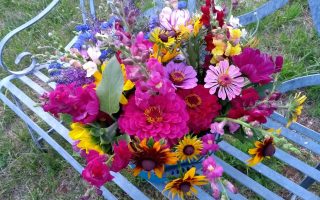
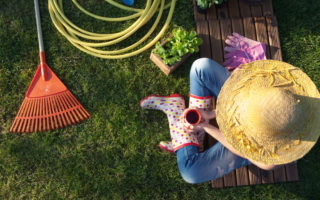

REPLY